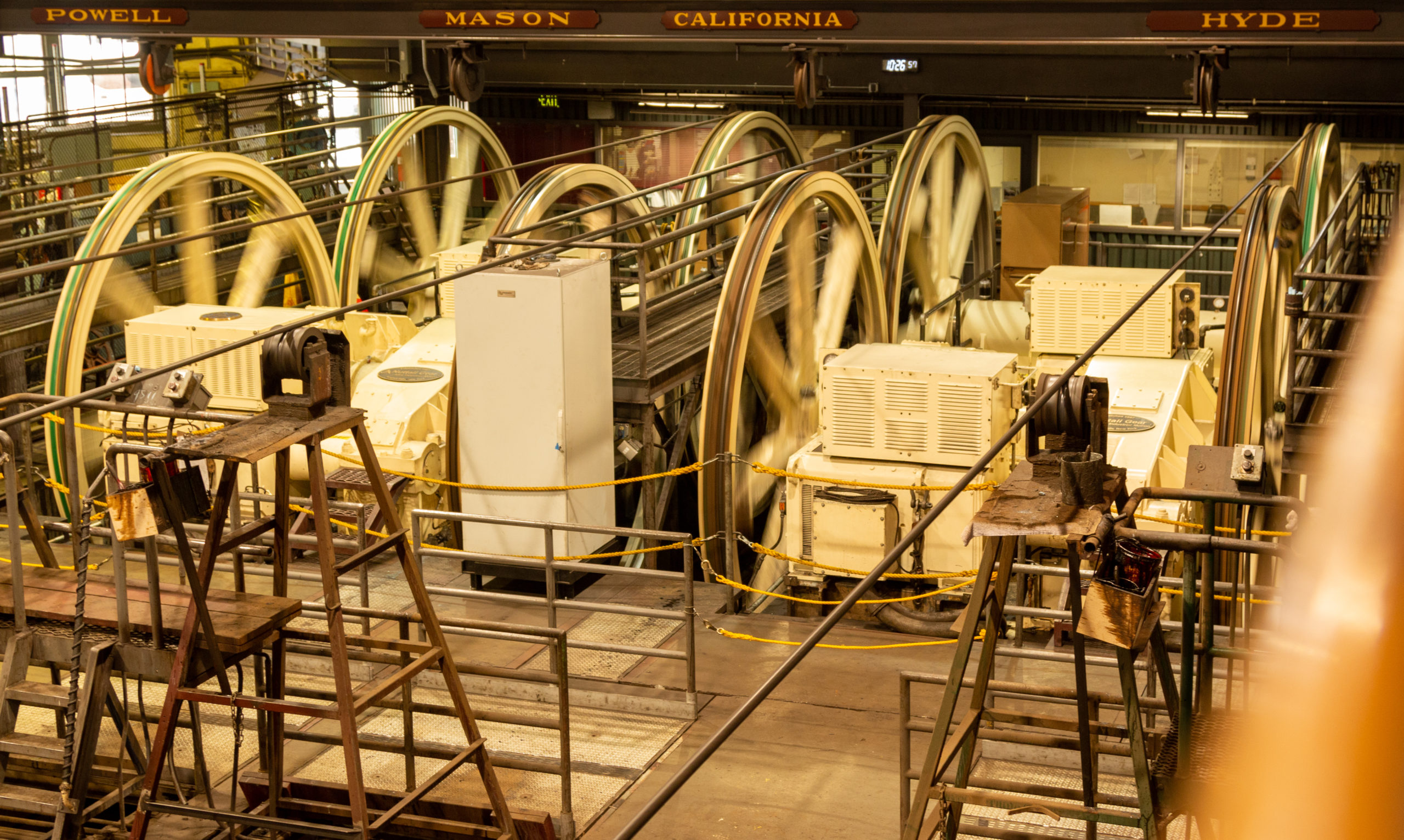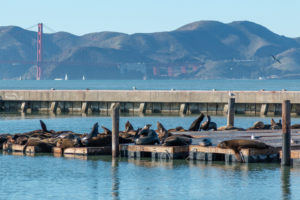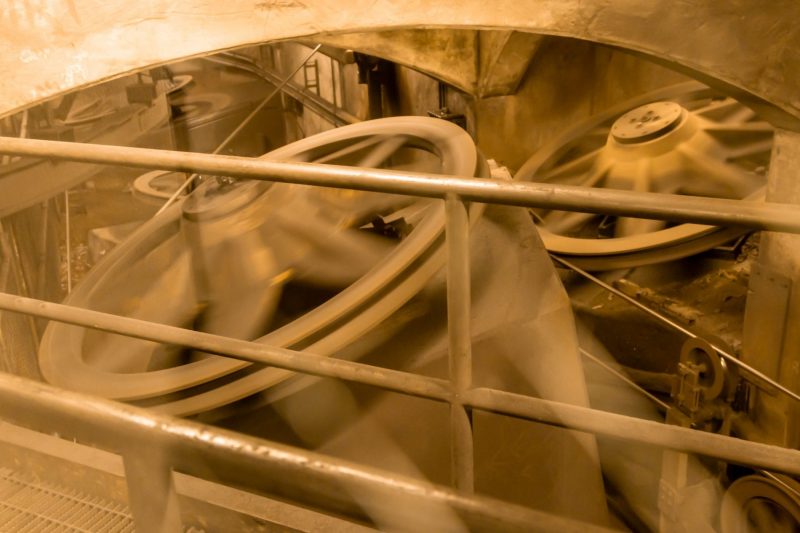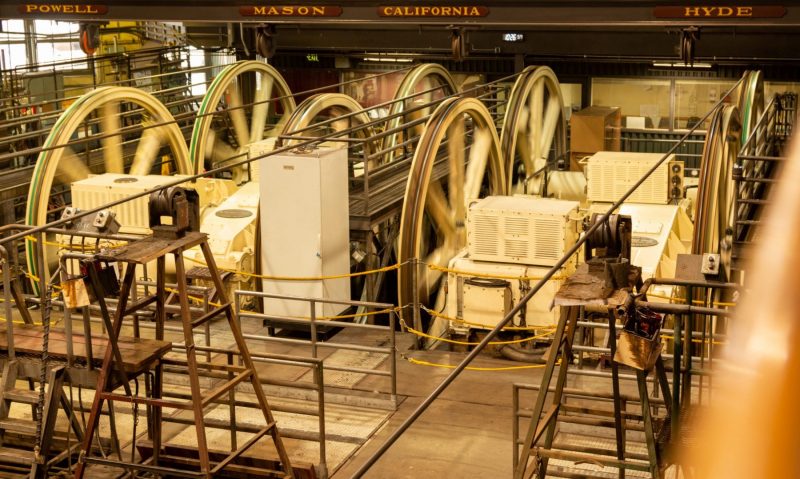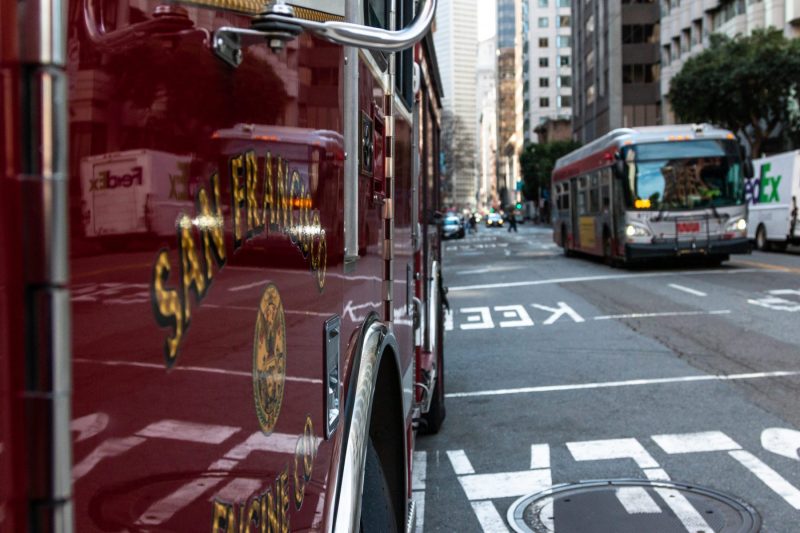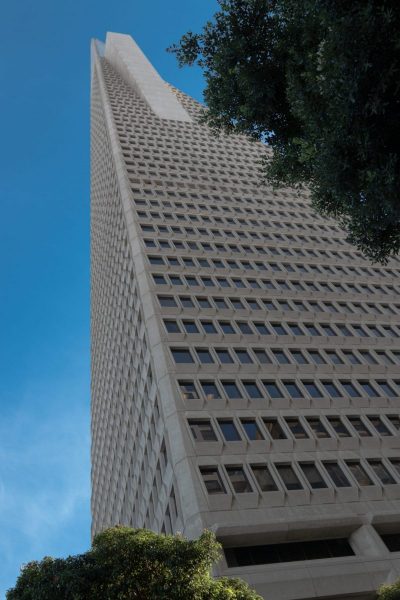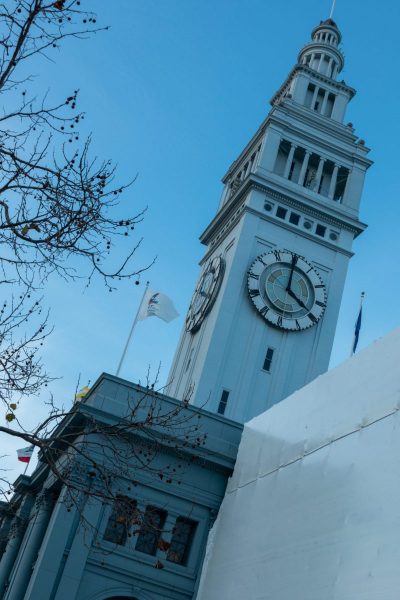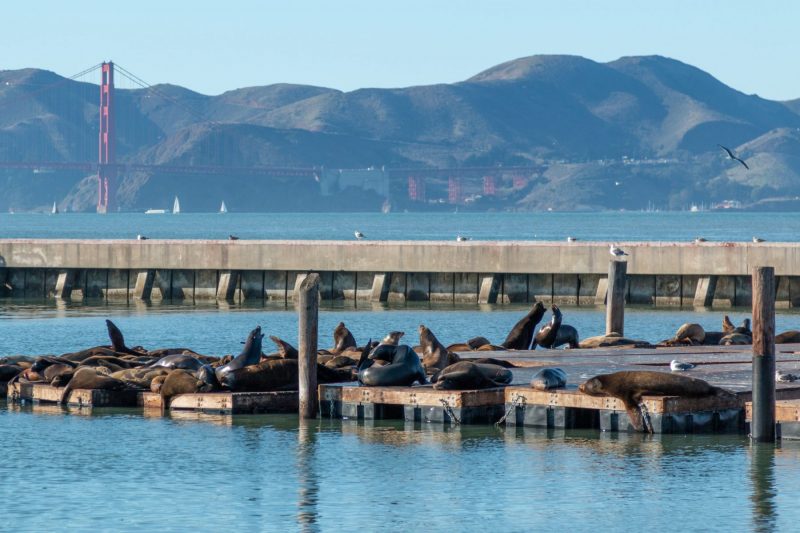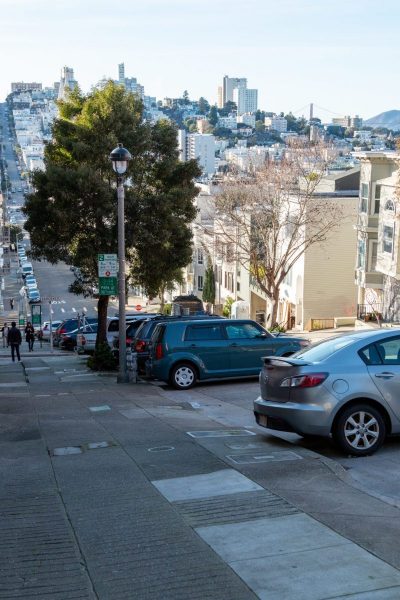#4 Cable cars and clam chowder
Thanks to time-zone changes, I found myself awake early, so post-breakfast I headed out for some exploring. The first thing I noticed being outside is the sound. I imagine locals are either completely oblivious to it, or have zoned it out, but wherever you walk around this part of town, you can’t escape the unique sound of the cable car system. Thanks to the mechanism employed, even when there are no cable cars to be seen, the noise is constant between 6:30 am to midnight. I was aware of SF’s famous cable cars before, but hadn’t put any thought towards how they worked.
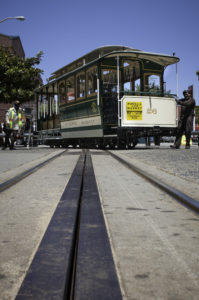
Cable car on a turntable at the end of the line
I think I had assumed they ran from an on-board electric motor, taking power from the overhead lines with a pantograph, and whilst there are overhead power lines in parts of town, these are there to serve the old trams or street cars. In contrast, the cable cars have no means of propulsion on board, the clue is in the name of course. The cars ride in rails set into the streets, and in the centre of the rails is an open slot about an inch wide, beneath which lies a steel cable, 3 cm thick, over 4 miles long (for the longest route) moving at a constant 9.5 mph beneath the streets through a network of pulleys. It’s this moving cable that provides the soundtrack to the city, and I grew to like it. As write this 3 months later I can still hear the ring of the cable and it takes me straight back.
My first destination this morning was to be the Cable Car Museum, as it was right next to the hotel on the edges of Chinatown, however I was too early and it wasn’t open yet so I went for a walk and stopped for a coffee at one of many independent coffee shops this city had to offer. It was so good I ordered another before heading back up to my original destination.
Far from being just a museum, this building is the original, and current centre of operations and the wheel house for the remains of the SF cable car system. Now primarily for the benefit of tourists rather than being a key part of the city’s transport infrastructure, it’s still a fascinating visit for any engineering nerd. The 30 or more cable cars running through the streets of the city are dragged around their route by these subterranean cables. The task of pulling these massive cables, and all the cars and people hooked onto them around the route of the network is done by a handful of enormous electric motors housed in this building.
I headed down to the Embarcadero, the former landing grounds for boats and home to many now re-purposed piers.
The Ferry Building is home to a bunch of foodie type places and an enjoyable way to lose an hour or so. Just up from there is where I found The Exploratorium, another pier, this time home to an excellent science museum, full of lots of very creative and interactive exhibits.
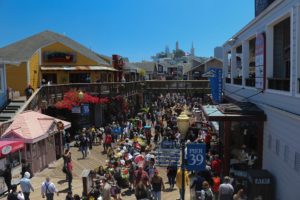
Pier 39, plastic hell hole (Lucas·G)
From there I walked up the seafront towards Fisherman’s Wharf. Long gone are the times when fishermen landed their catches here. It’s now a purpose-built tourist hole which I didn’t enjoy. Call me a snob, I can take it, but imagine Blackpool with everything in dollars. Centre of the tackiness is Pier 39, home to a shopping village and countless theme restaurants housed in fibreglass fake colonial-era architecture and dripping with garish brightly-coloured signage.
From the pier, you can look down on the California sea lions which call the pontoons adjacent to the pier their home.
From their sun-soaked position, hundreds of these massive noisy creatures gorge themselves and their offspring on whatever nearby food they can grab. There are also sea lions.
I walked away from the hectic side of town, back down the Embarcadero to a Peruvian restaurant I had noticed on the way up which looked nice. They served a lovely squid ink pasta thing, which did the job nicely for lunch.
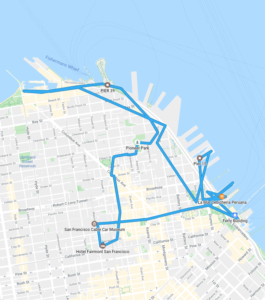
8 miles covered today!
I took a near vertical walk up to the Coit Tower, a pretty Art Deco structure looming large over the north east corner of the city. I had read that the views from the top were worth the climb. I fought my way up there through tiny deserted back streets and what felt like peoples’ back gardens, thinking that I would be the only person up there. In fact there were hundreds, who I presume had taken the more sensible driving option to get there. I didn’t fancy an hour in a queue so I left them to it and caught a cab back home.
Technically it was an Uber, as Uber and Lyft (which were born here) have pretty much decimated the traditional taxi business. There are something like 20 Uber / Lyft cars for every one traditional taxi cab. I would much rather flag down a local cab, but these unfavourable numbers meant that it was much easier to order an Uber and wait 2 minutes, that stand waiting for a cab to come by, which turned out to be a rare event.
I was tired after a full day walking around and being a proper tourist so I checked in at the hotel and was out for the night.




